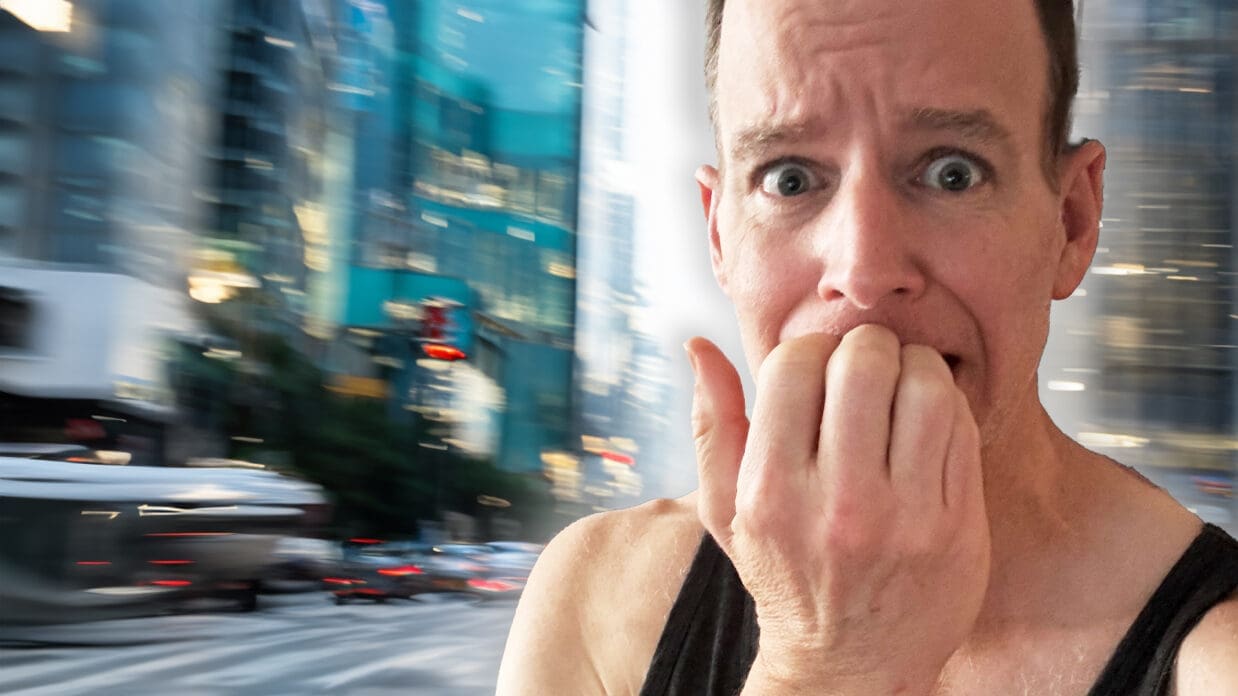Today we embark on a new adventure: a series of blog posts and videos specifically created to directly address the challenges we all face in the real world. I love the esoteric and “woo woo” side of yoga, but sometimes there is a legitimate need for which you need a simple, tangible solution rather than ancient wisdom you need to parse. (If you like the ancient wisdom stuff, though, I refer you to my Deep Dive in to the Eight Limbs of Yoga.)
Skip to a section:
The Poses
There are a handful of postures that can down-regulate a tough day (or moment) on their own.
You have likely heard of “fight or flight” responses to stressful situations. Our subconscious mind, which hasn’t fully evolved over the millennia, doesn’t know the difference between a looming deadline and being chased by a deadly predator, so it bumps up our adrenaline and our Sympathetic Nervous System turns on.
What gets a little less attention is the Parasympathetic Nervous System, also known as “rest and digest.” When our conscious mind recognizes that we aren’t in any real peril, we can use these simple postures to activate the Parasympathetic Nervous System, calm down and release the stress response.
One Pose or a Whole Sequence?
For the purposes of this post, I am treating each of these postures in isolation. You’re taking a little break to calm your mind and you perform one pose for a minute or so. When you have the opportunity, I think there is immense benefit in performing these postures in the context of a yoga flow. Scroll down to practice with me!
The poses in this post (click to skip to one):
- Savasana / Corpse
- Viparita Karani / Legs Up the Wall
- Balasana / Child’s Pose
- Marjaryasana – Bitilasana / Cat – Cow Flow
- Uttana Shishosana / Puppy Pose
- Supta Matsyendrasana / Supine Twist
- Adho Muka Svanasana / Downward Facing Dog
A Note About the Images: I went out to a neighborhood park here in Manhattan shortly after having a cupping treatment for my back and shoulder. That’s those giant red marks you see! Don’t worry. Everything is fine, and they’ll fade soon.
1. Savasana (Corpse)

In my opinion, this is the quickest way to stress relief!
Most yoga classes will end with Corpse Pose. In that context, Savasana does a lot of things for us: namely, lets the body relax and integrate the work that may have preceded it, no matter how gentle or intense. I often say in class that it is simultaneously the most difficult and most important posture of our asana practice.
On its own, lying down and closing our eyes for even a few moments can cool and calm the body nearly immediately.
How to Practice Savasana for Stress Relief:
- Find smooth flat surface
- Coming to your back, let the feet be separated 12-24 inches (wide but comfortable) and “flopped open.”
- Let the arms be similarly wide with palms up.
- Close the eyes and count five to 10 slow, steady breaths.
- Gently and effortlessly roll onto either side and slowly come to sit for a moment before standing.
BONUS: Close your eyes or drape a hand towel or eye mask to experience a little extra rest.
Savasana and Trauma
There are those of us for whom lying in the center of a room on our backs with our eyes closed feels far too exposed, especially if we have experienced abuse or physical/emotional trauma. If that is the case, then simply cross Savasana off your list. In a class setting, I usually give legs-up-the-wall (see below) or fetal position as options.
2. Viparita Karani (Legs Up the Wall)
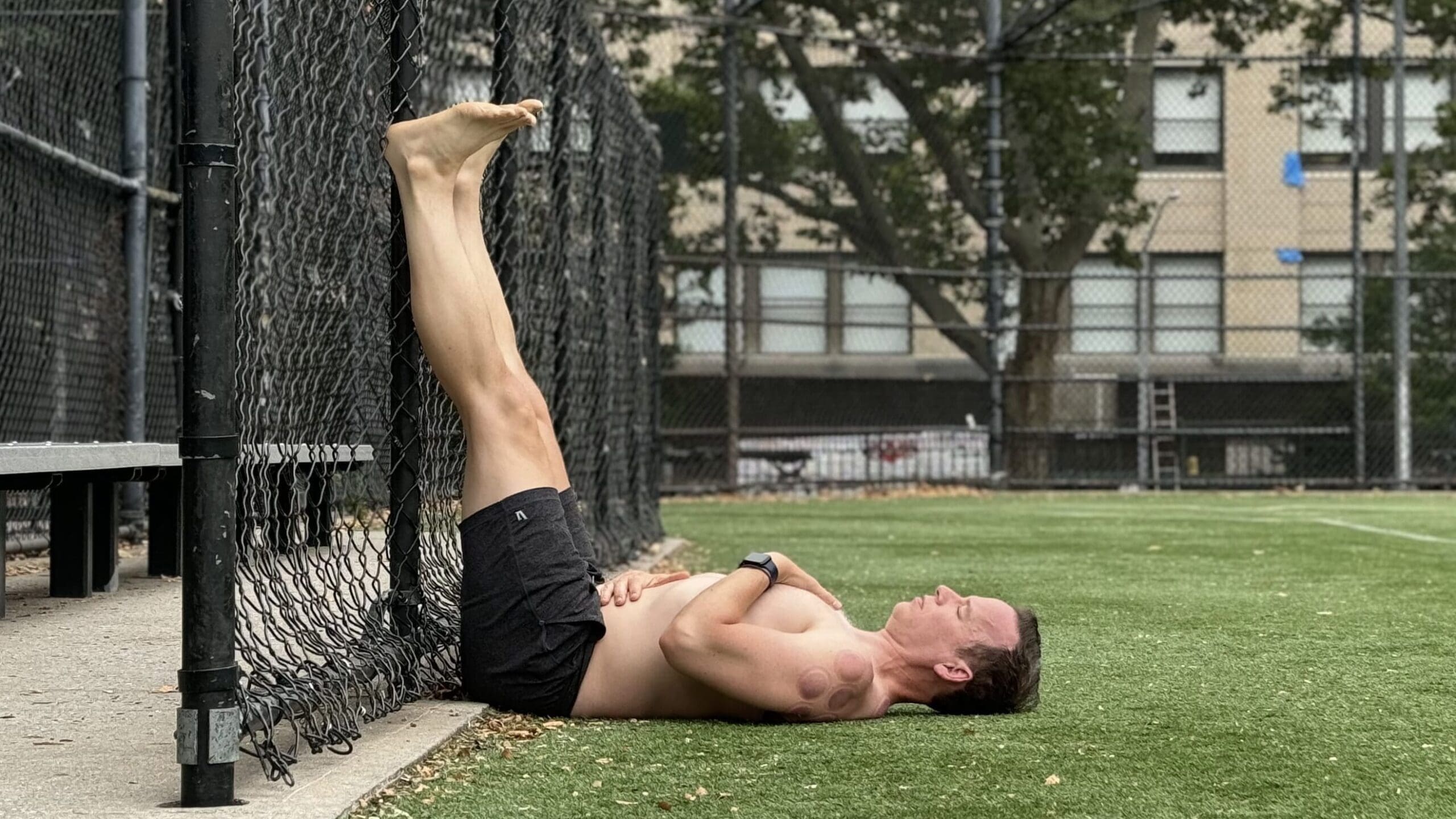
Also known as Legs Up a Wall Pose, this effortless inversion has all the benefits of headstand or shoulder stand without any effort whatsoever. It has all of the same benefits of Savasana, as well as the added bonus of getting the feet above the heart, which is an aid to circulation and — when performed with eyes open — literally gives a different perspective.
Don’t have a clear wall space? No problem… you can put your calves on a chair or sofa instead!
How to Practice Vipariti Karani for Stress Release:
- Sit near a wall or another vertical surface (maybe a sofa or chair).
- Gently make your way to your back, and organize yourself so that your rear end is a few inches from the wall or your chosen prop.
- Elevate your legs. You may need to shift around a little bit to find the angle that feels best by being either closer-to or further-from the wall.
- Once again, count five-10 slow, steady breaths, keeping eyes open to take in the view!
3. Balasana (Child’s Pose)

Child’s Pose isn’t so-named because it’s so easy ‘even a child can do it.” It has that name because babies sleep on their bellies, all curled up in a ball. There are ways to make Balasana a little more active and stretchy, but — for the purposes of relieving stress — I think it’s best performed passively.
This is also a nice option if you have an uncomfortable response to Savasana.
How to Practice Balasana for Stress Release:
- Make your way to the floor or mat on all fours. It might be nice to place a cushion or folded blanket under the knees if they are sensitive.
- Bring the knees and inner thighs to touch and fold over your thighs.
- Wrap the arms back so that they are draped alongside your legs and allow the shoulder blades to soften away from each other.
4. Marjaryasana – Bitilasana (Cat – Cow)
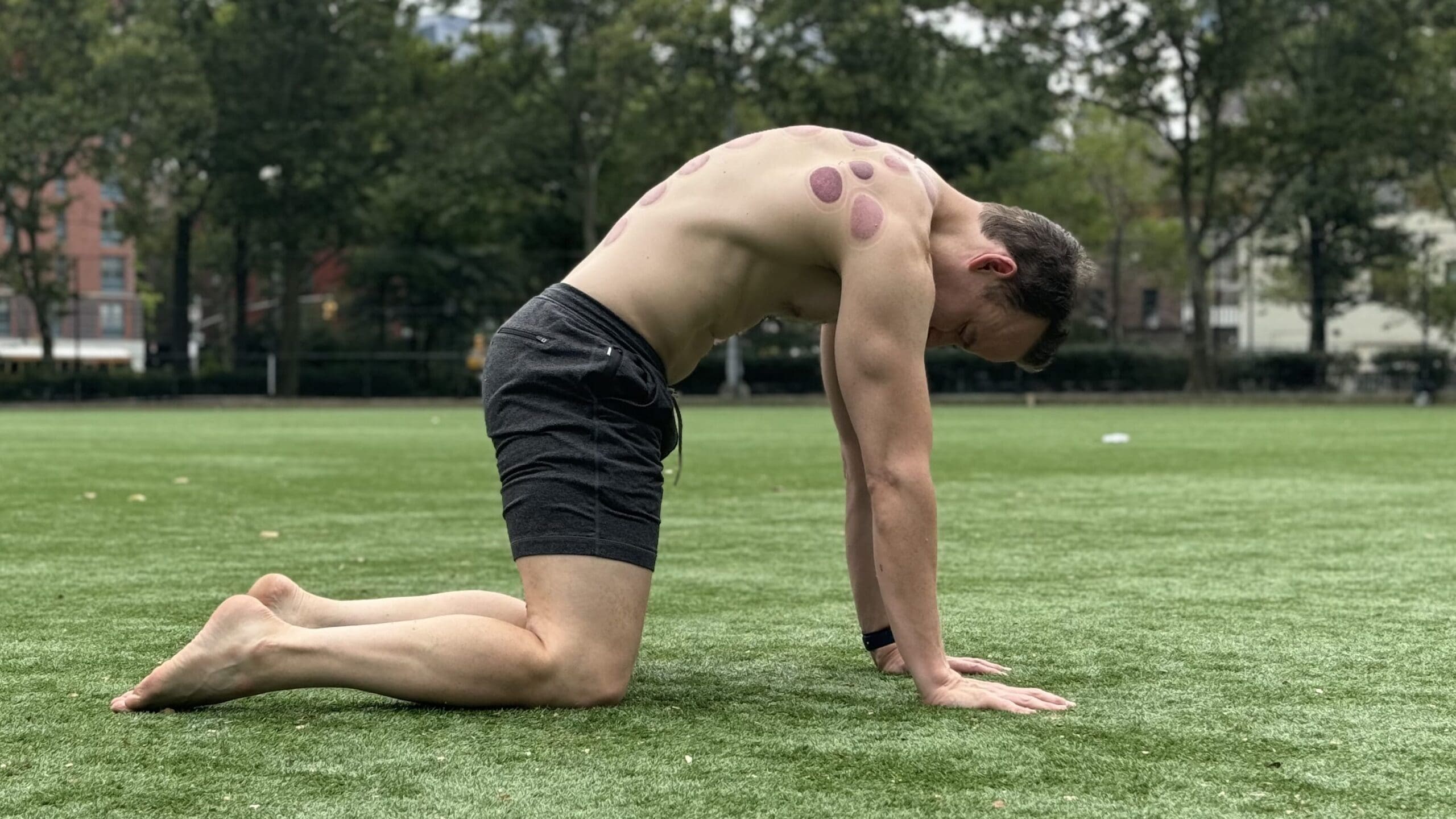
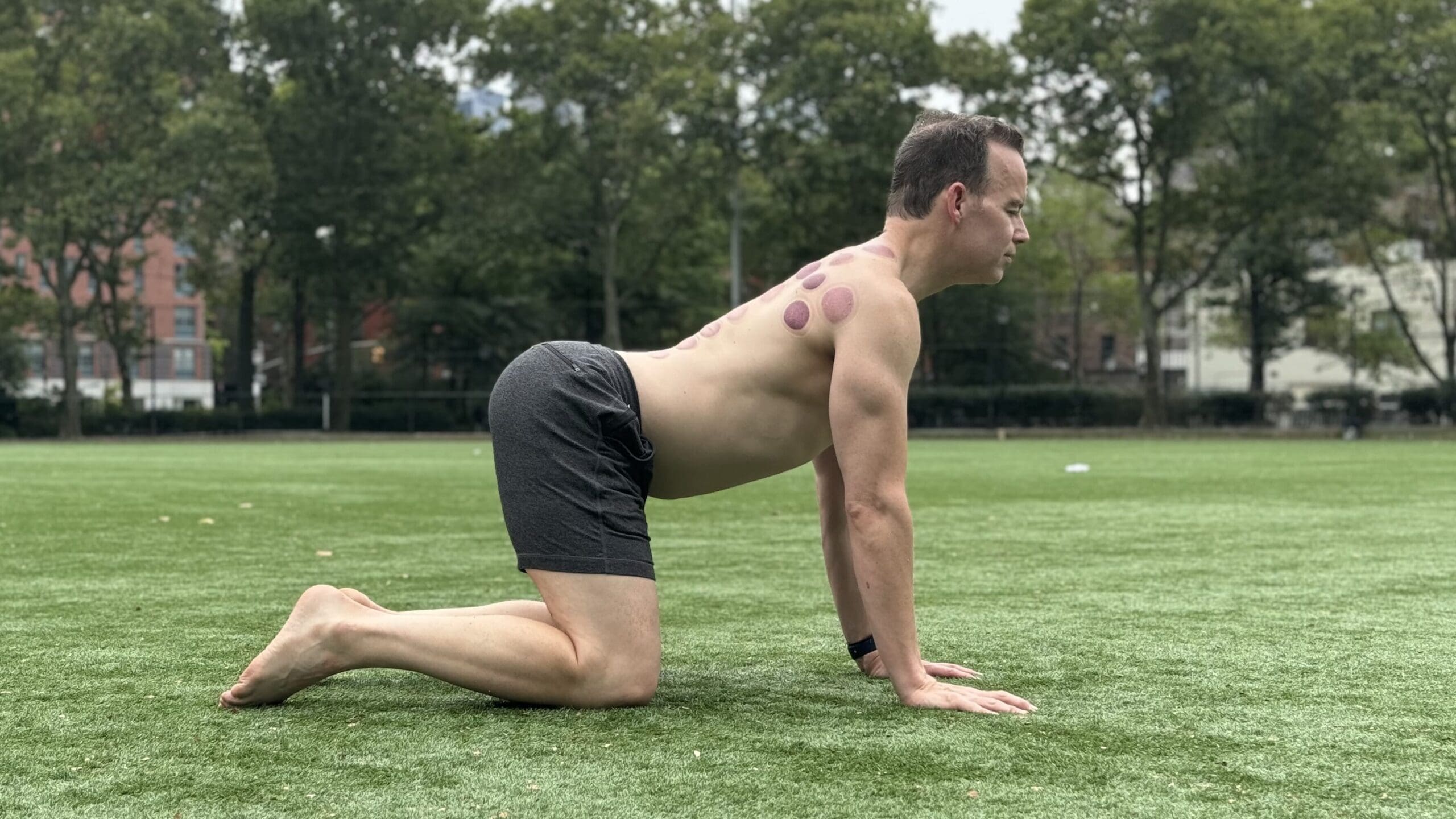
One of the simplest, most universal flows in Hatha/Vinyasa practice, I don’t think I’ve ever taught a class that doesn’t include at least a few rounds of Cat – Cow. Because you’re on all fours, there’s no fear of falling over, and I think it’s really hard to hyper-extend (which can definitely happen in poses like Downward Facing Dog).
Any time you have the opportunity to move with the breath in a mindful way, it will serve to de-stress, but this simple flow has the added benefit of articulating the spine. There are literally dozens — maybe hundreds — of muscles that support these seemingly-straightforward undulations, and this is a really healthy, great-feeling way to open them up. I literally start every day with a few rounds of Cat-Cow.
How to Practice Marjaryasana – Bitilasana for Stress Release:
- Make your way to all fours.
- Align the wrist-creases to be parallel to the top of your mat (I often don’t bother with a mat, so I just imagine it there). Spread the ten fingers wide.
- Exhale fully.
- As you inhale, gently draw the shoulder blades towards one another, release the belly down as you pull the chest forward and lift the bum, creating a long smooth “swoop” from the crown of the head to the tailbone.
- As you exhale, reverse this motion by scooping out the belly, rounding the back and tucking chin and tailbone.
- Perform at least three rounds, trying to fill each extended inhale and exhale with steady movement.
Variations:
You aren’t obliged to perform Cat – Cow exactly like this. If your wrists are tight, come to fists or (my favorite) flip one-or-both hands over so that the back of the hand is on the mat with fingertips facing inward (less intense) or back towards the knees (more intense). You can also progress Cat and Cow by moving through Upward Facing Dog (Urdhva Muka Svasana) and Downward Facing Dog (Adho Muka Svanasana).
5. Uttana Shishosana (Puppy)
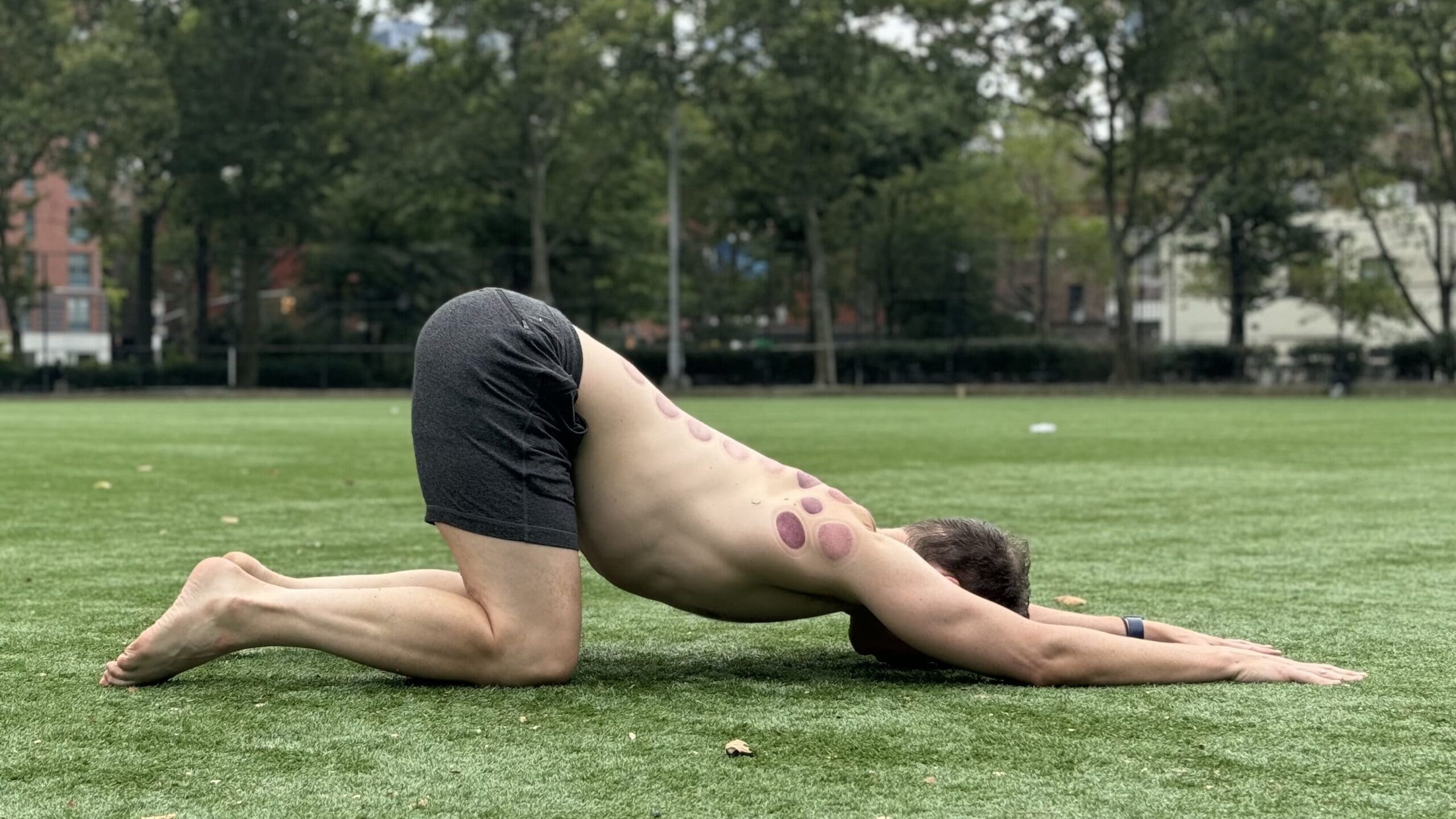
A mix between Down Dog, Child’s Pose and Cat-Cow, Puppy Pose (Uttana Shishosana) is a great heart opener and a bit more passive than its “adult” cousin, Adho Muka Svanasana. When performed for relaxation purposes, really let gravity do the work of drawing your breastbone towards the mat.
How to Practice Uttana Shishosana for Stress Release:
- Come to all fours (quadruped). Add a blanket, towel or cushion under your knees if they are sensitive.
- Keeping your hips stacked over your knees, being to walk your hands forward until you feel a bit of a “reach” from fingertips to tailbone.
- Perform five-10 breaths, allowing each inhale to expand the ribcage and each exhale to release the breastbone closer to the floor/mat.
You may need to adjust the length of your pose as you stay in it, but try not to let the hips travel too far behind or in front of the knees.
6. Supta Matsyendrasana (Supine Twist)
I could have chosen nearly any twisting posture here, and there are dozens. In this week’s yoga video, I offer a Seated Spinal Twist (Matsyendrasana), in fact. Twists do so many great things for us. On cooler days, they can help to warm the body. They also stimulate digestion, literally “wringing out” the space that houses our gastrointestinal organs.
Ho to Practice Supta Matsyendrasana for Stress Release:
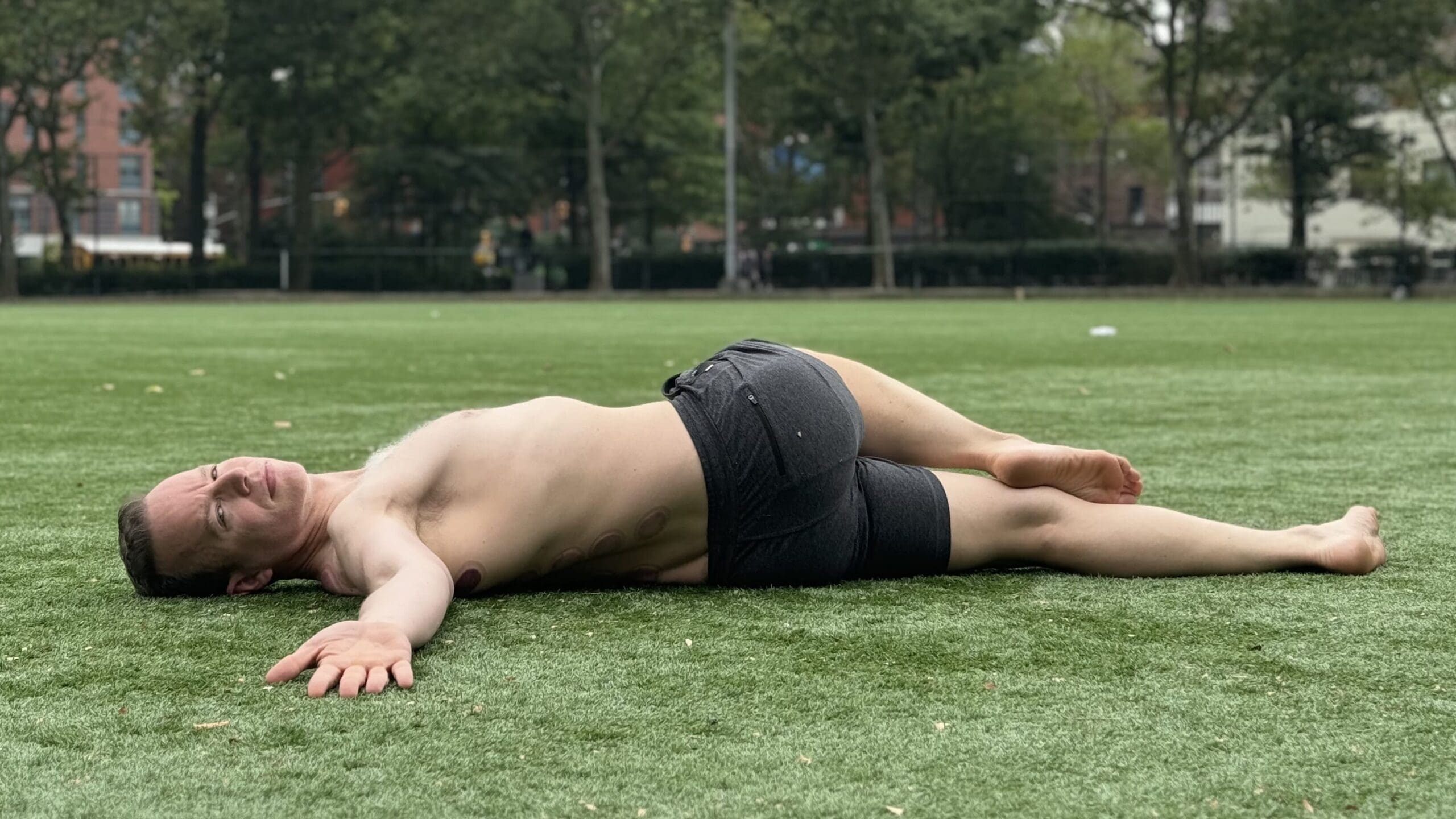
There are, of course, countless variations and progressions. These are steps for the one pictured.
- Come onto your back.
- Hug both knees into the chest to find length in the spine and a little stretch in the glutes/hips.
- Keep the right knees close and release the left leg long.
- Keeping the knee bent, place the right foot on the mat and gently shift your weight a few inches to the right.
- Allow the right knee to fall across the body, keeping the foot around the knee/mid thigh (depending on comfort).
- Extend the right arm out in a “T” shape or soften the elbow into a “cactus” shape. If it feels comfortable in the neck, let the head fall to the right.
- Perform five-10 breaths on one side before repeating on the other.
7. Adho Muka Svanasana (Downward Facing Dog)
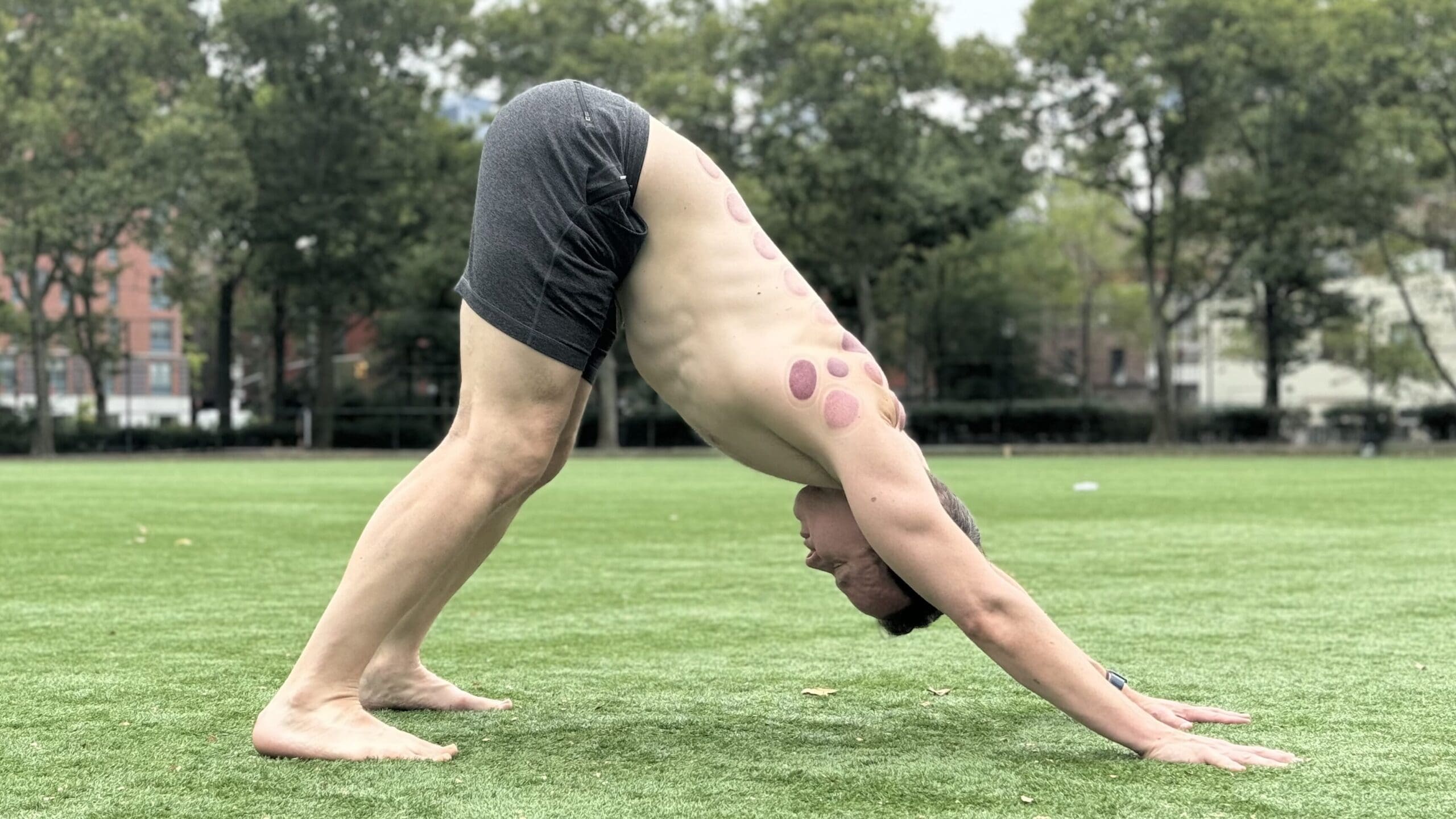
I feel like we spend the most time in Down Dog during a typical Vinyasa class. It is so de rigueur that oftentimes we gloss over it and take it for granted.
When you’re newer to yoga, Adho Muka Svanasana can be really challenging. People often complain about their wrists and shoulders getting tight or tired. I often remind them that (a) Down Dog is meant to be a restful pose — a time to come back into symmetry and quiet the mind and body and (b) it’s always perfectly acceptable to opt for Balasana instead.
All that said, with practice, the wrists and shoulders can be much more relaxed as you find the balance of this beautiful shape.
How to Practice Adho Muka Svanasana for Stress Release:
There are nearly infinite cues I could offer to help you find your Down Dog. These are the ones I find most helpful in my own practice, but recognize that the best practice is … practice.
- Come to the floor and find a High Plank. Set up your plank so that the shoulders are just a little bit forward of the wrists and engage your quadriceps to support the long bones of the legs and help engage the core.
- Send the hips up and back to create the inverted “V” shape, trying not to adjust hands or feet (an inch or two shorter is fine, but sometimes folks want to take big steps in, which — unless you’re working through an injury — isn’t ideal).
- If you have uncomfortable sensation in the wrists, think about lifting them, thereby creating a sort of suction-cup shape in the palms; gripping the floor with the pads at the tip of each finger like cat claws.
- Relax the shoulders and release the neck. Instead of pushing from the shoulder muscles, think about lengthening from the pelvic bone up through the ribs and armpits.
- Soften the knees a little bit and pull the chest back in space before imagining the kneecaps traveling “up” the legs towards the hip creases while simultaneously feeling the quadriceps hug the femurs.
- Allow the heals to soften towards the mat, as though they’re yearning to reach it. They don’t have to touch the mat (although — barring injury — they probably will in time).
- Perform five-10 slow steady breaths, allowing each exhale to melt you a little deeper into the pose.
If you can’t perform five slow breaths, take breaks by coming back to Child’s Pose, giving the wrists a break, and then returning. Over time, your body will get used to long periods in Down Dog.
Honorable Mentions
These are a few other postures that I find calming that just didn’t make the list: Setu Bandha Sarvangasana (Bridge Pose), especially when performed with a block or other support placed at the top of the pelvic bone / low back; Uttanasana (Forward Fold) … especially the rag doll version where you hold opposite elbows and let that weight further release the spine; Ananda Balasana (Happy Baby Pose) is often included in various spots in a vinyasa practice because it’s a nice hip opener/low back release (early in practice) while also down-regulating and calming (nearer to the end).
Vinyasa Practice for Reducing Stress
This short-ish Vinyasa class (recorded live — you should join us!) incorporates a lot of these postures into a dynamic, all-levels sequence is great for the middle of a hectic day when you just have a little time away from work. Sneak off to the gym or a break room (you don’t even really need a yoga mat) and unwind.
Most of the postures above are included, plus Ustrasana (Camel), a kneeling backbend.
Meditation for Reducing Stress
This is an easy one you can do without a dedicated meditation time. Simply as you’re walking around, experiencing whatever life is throwing at you. In the middle of the stress-storm, just ask “what is the feeling? and what are my thoughts about the feeling?”
I’m learning — and it’s taken years — that the way to experience emotion without letting it rule your life is to do exactly that: experience it. Sit with the feeling. In your bones. In your heart. In your gut. Don’t try to shorten it or make it lighter. Instead, just flag every time a thought about the feeling comes up: “This sucks.” “I can’t believe she said that!” “Why would he treat me that way?” or, what I usually fall into, “I’m so mad!”
The goal here is to not let the thoughts get in the way of the emotion. We don’t want to repress or inappropriately express the feeling; we just want to give it space. The result is usually that it will dissipate on its own, but if it doesn’t, walk around angry or sad or sick for as long as it takes to wear itself out. If you’re not feeding it with your thoughts, it’ll quiet down eventually.
In this video, we’ll practice a variation of Box Breath Pranayama, which is proven to both focus and relieve stress. The longer exhales, in particular, stimulate the Parasympathetic Nervous System and activate our “rest and digest” response.
The second piece of our meditation is to recognize the difference between feelings and thoughts. By recognizing when our thoughts about feelings creep in, we can focus on the experience of feeling angry, anxious or — dare I say — stressed.
Nothing that appears in this blog or on this website is intended to treat or diagnose any disorder, physical or otherwise. Always consult a physician before beginning any exercise program.
